When typhoon Saomai hit Zhejiang and Fujian provinces, the mainstream media drew its reports from Xinhua. For example, the latest Xinhua report says:
The death toll from typhoon Saomai had risen to 255 in China by 2 p.m. Monday, with another 41 bodies discovered in Fuding city in east China's Fujian Province. Over 160 others are still missing after Saomai wrought havoc in the eastern provinces of Fujian, Zhejiang and Jiangxi. In Fuding, the worst hit city in Fujian, 138 people were killed,1,350 injured and 86 others still missing. Officials with Fujian Provincial Flood Control and Drought Relief Headquarters said most of the people were killed when the super strong typhoon broke the moorings on their ships which had sought shelter in the harbor. The others were killed in typhoon-triggered incidents on land such as floods, landslides and mud-flows. Local authorities and residents are still searching for the missing.
Here are some photos that have appeared in mainstream media in China.
A typical criticism of Xinhua reports is that they are factually challenged since accuracy and truthfulness are allegedly subservient to greater goals such as stability and harmony. Thus, in ObserveChina,
There are bodies strewn all over the beach in Shacheng harbor, Fuding city. Thirty-one bodies were fetched by a single fishing net ... the total number of recovered bodies in Shacheng harbor and Long'an are more than 500 already ... there are many missing persons, totaling more than 1,000. The pitiful sight is indescribable with piles of bodies everywhere and notices posted seeking information. So how come the media are reporting only dozens of deaths! The official numbers of casualties and missing persons are definitely problematic!
From Hong Kong, Chow Chung-yan of South China Morning Post wrote more about the numbers:
Angry residents of the Fujian township of Shacheng have accused local authorities of understating the true scale of casualties caused by Typhoon Saomai - the strongest storm to hit the mainland in 50 years. They also accused the government yesterday of not helping them look for lost relatives in the first two days after the storm hit and said they feared many victims' bodies would never be found because of the delay.
Shacheng, which falls under the administration of Fuding city, was directly hit by Saomai on Thursday. The typhoon caused extensive destruction to the fishing port and has claimed dozens of lives. The official death toll in Fujian is 166. In Fuding alone, 138 were confirmed dead and 86 are missing. But residents said yesterday the actual death toll could be many times higher. In Nanzheng - a small village separated from Shacheng by a narrow strait - locals said more than 100 people were missing. They were particularly angry after a local government-controlled newspaper put the death toll at just two. Many saw it as a move by officials to hide the true scale of the disaster.
"The entire family of my neighbour - eight people in total - is gone. I have lost my cousin. Everywhere you turn, you see floating corpses. How could we believe the official figures?" a fisherman asked. Another fisherman, Wu Guojia, said he found six bodies at his ruined fish farm. He also saw a navy gunboat capsize in the storm while trying to rescue two fishing boats. "Later, I saw at least a dozen corpses in the water," Mr Wu said. "It really was a nightmare."
Two local officials were heard discussing the casualty figures in private yesterday. One said about 600 of the 10,000 vessels moored in Shacheng's harbour had sunk in the storm. The figure did not include navy losses, he said.
I'll leave aside the problem of the numbers because this will go on forever without getting anywhere. Instead, I will deal with the emotional aspects of media reporting. Simply put, the Xinhua report is unemotional and distant. But here is the report from Southern Metropolis Daily reporter Feng Hongping (丰鸿平).
[in translation]
Yesterday morning at 9am, the winds and waters were calm at Shacheng harbor, and the sunlight was warm and lovely. More and more ships came in from the outside carrying fishermen looking for their relatives. When the women landed on Shacheng pier, they began to weep from the sorrow. As more of the ships arise, there were crying women all over the town, with the men barely able to hold back their tears. Their sons, husbands and brothers have gone missing after the typhoon passed.
Their greatest hope is to find the bodies of their relatives. The fishermen said, "If there is no information by the end of today, we can basically assume that they are dead."
The bodies of the fishermen who died in Shacheng harbor have been washed by the tide to the seashore near Liujiang and Long'an. Those were the spots around which the relatives were wandering.
The relatives of Shacheng town South town brigade leader Yang Changyin were riding around in a bus and saw a body floating in the harbor. They stopped the bus and rushed over, and they identified the body was that of Yang Changyin.
The family grabbed the concrete barrier on the pier and cried.
In the water, Yang Changyin floated with the waves like a statue. His hand was secured by a nylon rope tied to the railing on the pier. The observers said that the body had been floating in the water, and some local people used a rope to drag the body to the pier and wait for the family members to claim it.
Not far away from the body of Yang Changyin was another body floating face up in the water. Family members looking for their loved ones came one group after another to look at this body. They came, they looked and then they left. Walking along the Shacheng harbor, this reporter saw five bodies like that.
On the morning of August 11, the most number of bodies were found floating in Shacheng harbor. Around the Long'an area alone, more than 50 bodies were found.
Yi Jishi was the captain of a five-person fishing boat that came for shelter in Shacheng harbor. After the typhoon passed, he was the only survivor. "Bodies were everywhere on that day. There were at least 50 to 60 bodies." According to him, more than 1,000 ships came to seek shelter in Shacheng harbor. Along with the small boats, the harbor was filled with ships everywhere. Almost all of the small boats went to the bottom of the sea, and several hundred large boats also went down.
Mrs. Chen had ten persons on his boat, of which three survived; Mr. Yang had ten person on his boat, of which four survived ... according to them, all the more than twenty ships from Shansha sank, and the South town brigade also had more than twenty ships down.
The reporter went to Shacheng town and learned that the government is trying to compile the numbers for the dead and missing accurately. The workers said that the typhoon disrupted telephone service and road traffic, and therefore they find it difficult to get on with their work. For example, in South Town, their major focus is to search for bodies and the telephones do not work there.
This report is much more of an emotional product. It is no surprise that the metropolitan newspapers such as Southern Metropolis Daily are besting the traditional newspapers in the marketplace. If you are the consumer (as opposed to a government unit) and you have to buy one newspaper for the day, which one will you buy? People's Daily or Southern Metropolis Daily? There is no contest.
But you will note that the reporter is restricting himself to writing about the floating bodies that he had observed. You would think that he must have a camera. Even if he is not a photojournalist, a reporter nowadays should have a digital camera on hand. But it would seem that even if he had photos of the bodies of Yang Changyin and others, those are probably unpublishable in any printed newspaper because they would shock people far too much. This is not even about China, but it may be true elsewhere in the world.
In the past, that would have been the end of it as the rolls of plastic film sit in a cabinet in the backroom at the newspaper office. But today, there is the Internet and there are forums that do not abide by newspaper rules. So, from the local forums in the disaster areas: KDNet, 703804, 703804, 703804, Baidu, Baidu, Baidu, fzbm, here is a selection of Saomai photographs. The original posts contained very few words and consisted mostly of photographs taken as the photographers traveled through the zones of devastation. But what raw emotional power!
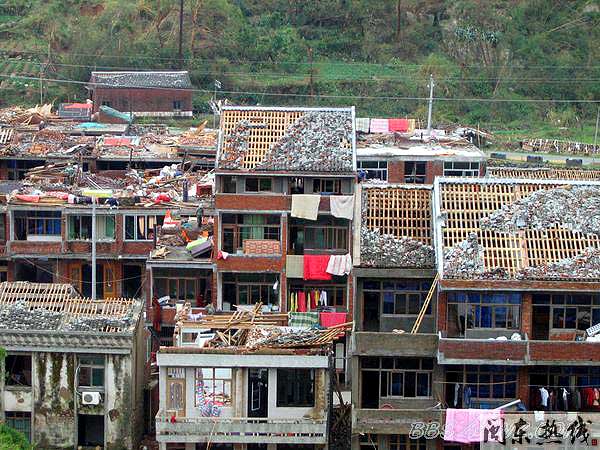

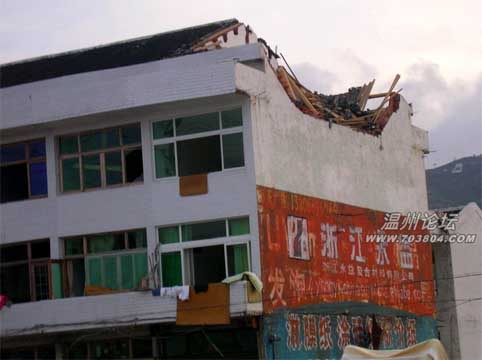
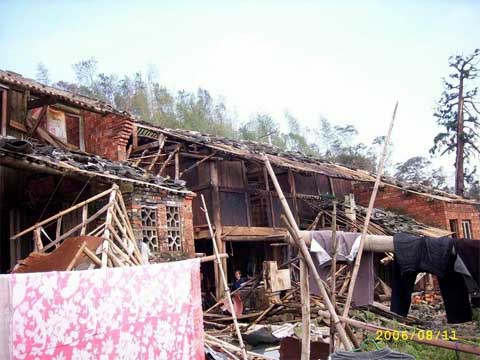
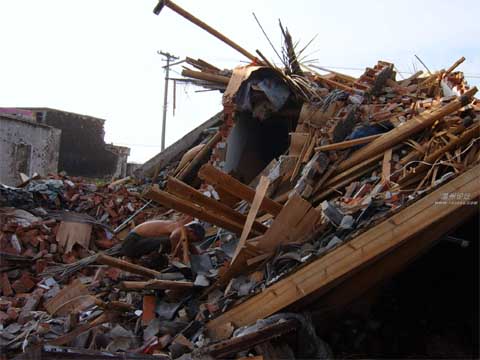
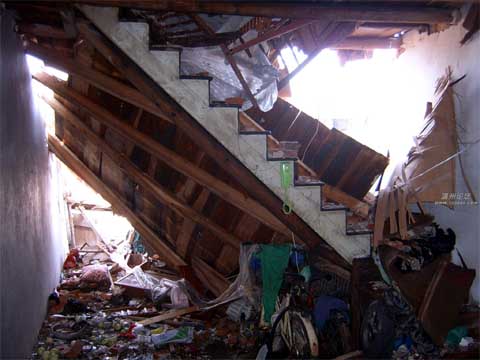
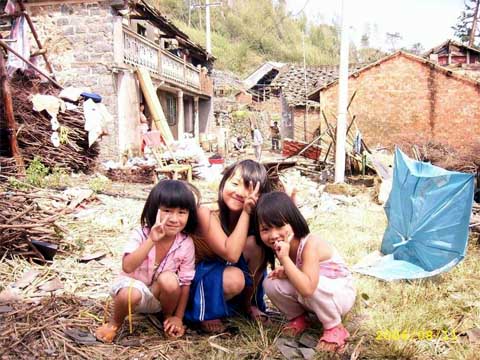
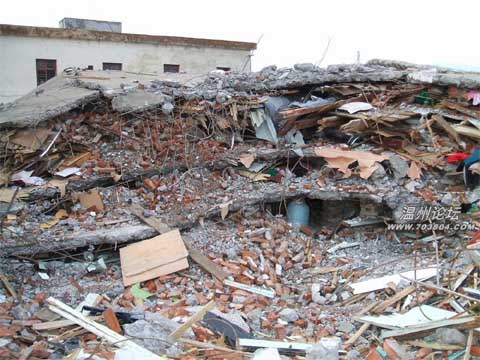
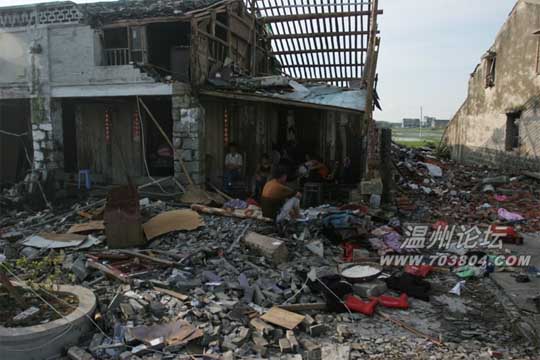
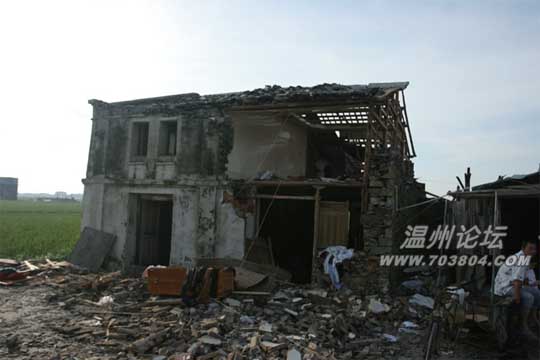
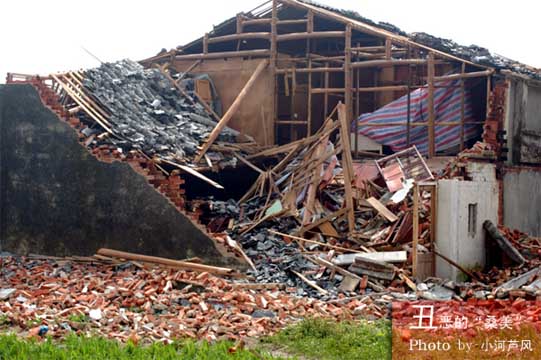
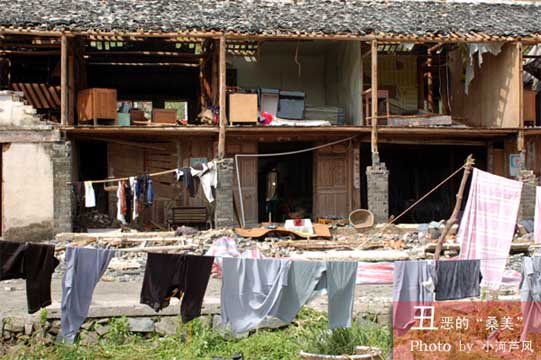
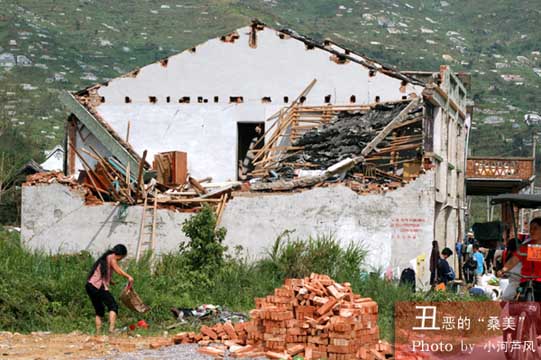
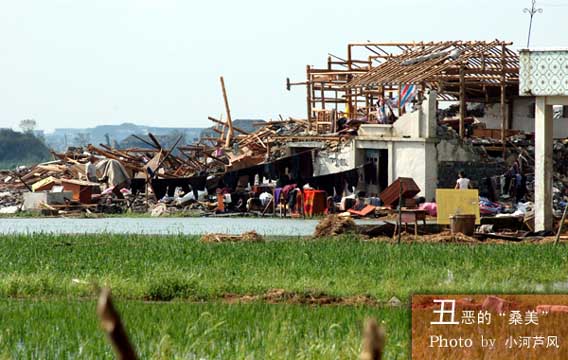
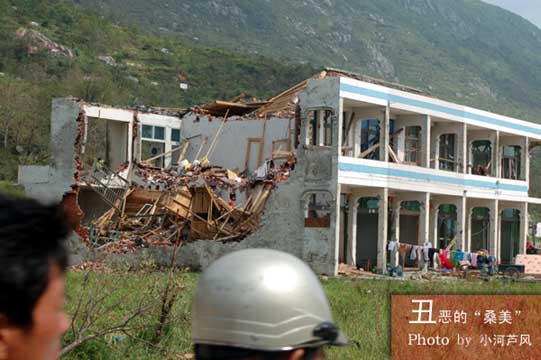
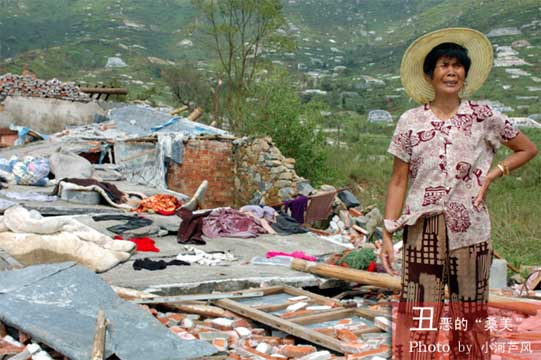
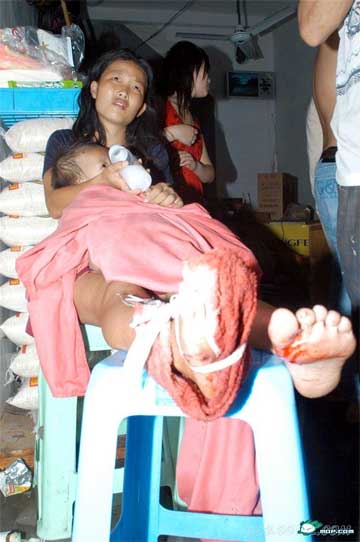
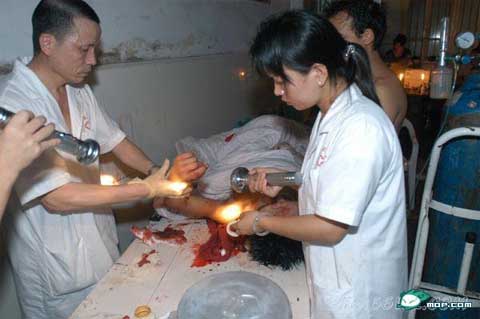
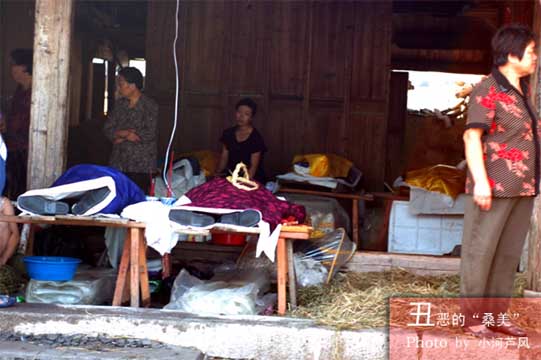
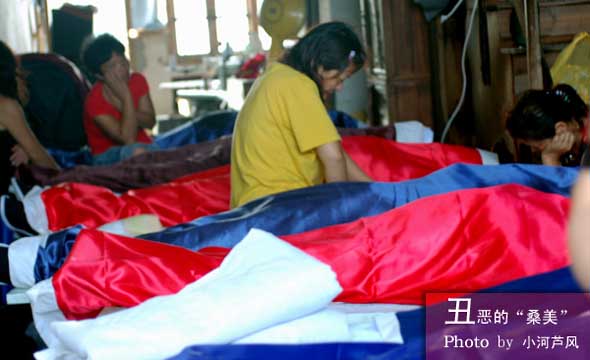
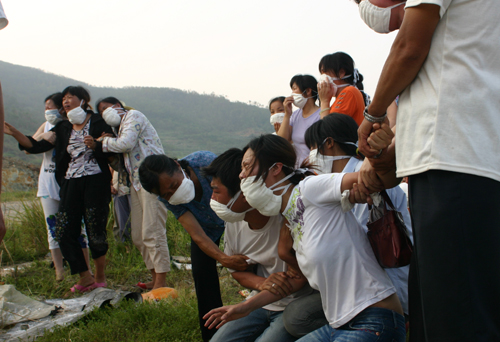
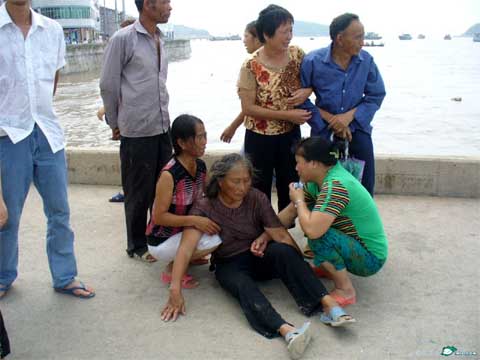
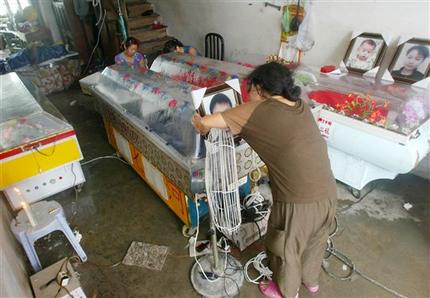

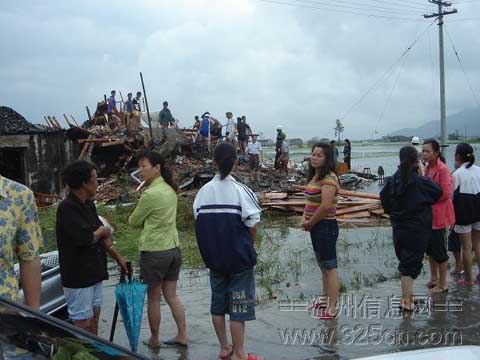


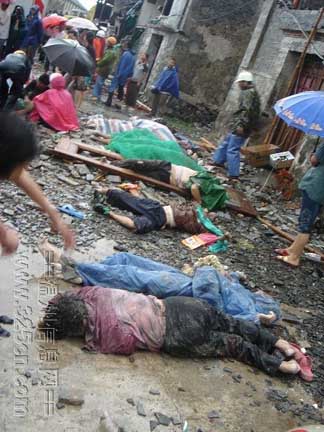
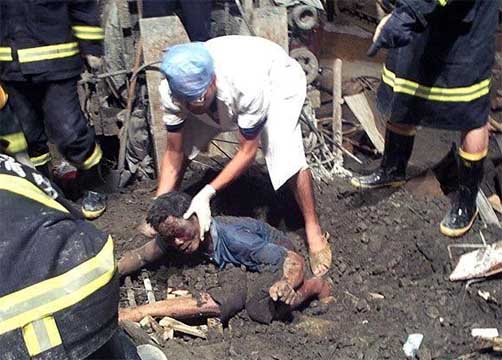

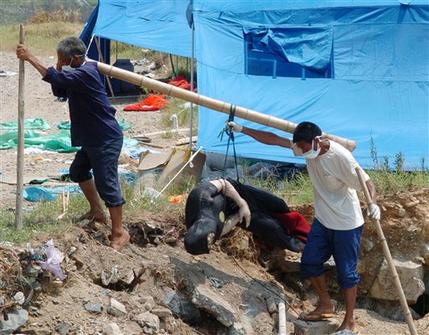
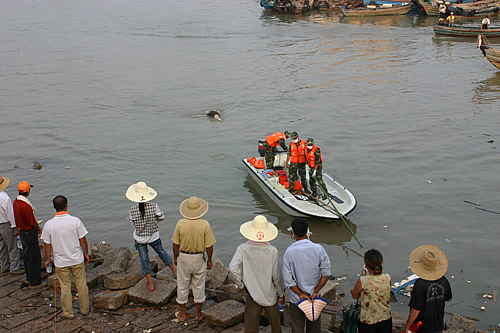
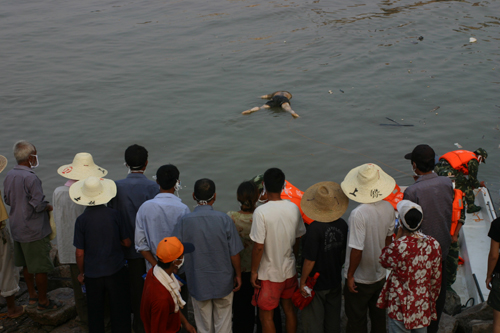
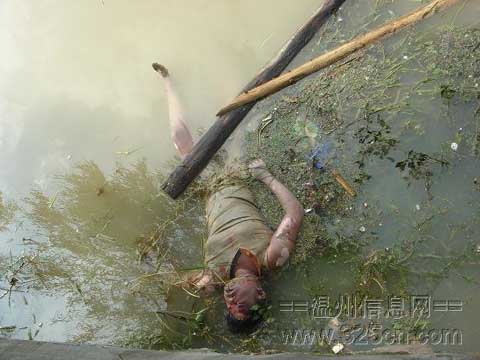
Related Link:
Dispute over Typhoon Saomai coverage centers on role of media in disaster response David Bandurski, China Media Project
Fujian's top official spars with Xinhua News Agency over Typhoon Saomei coverage David Bandurski, China Media Project
Should that last photo above be shown? The following is the debate in the United States in the aftermath of Hurricane Katrina.
(Media Matters) Media largely ignored CNN's legal victory over government restrictions on Katrina coverage. September 14, 2005.
In response to restrictions placed on the media covering the Hurricane Katrina disaster by New Orleans emergency operations chief Terry J. Ebbert and Lt. Gen. Russel Honoré, CNN successfully filed suit against the U.S. government to protect the right of the press to photograph the deceased victims of the hurricane. ...
On September 9, Honoré, who leads the hurricane relief effort, reportedly declared that the media would have "zero access" to body-recovery operations, stating that it "would not be good to have pictures of people, the deceased, shown on any media." Also on September 9, Ebbert stated that the process of recovering the deceased would be "done with dignity, meaning there will be no press allowed." Their comments followed reports from earlier in the week that the FEMA allegedly asked the media to not photograph those who died in the disaster.
Later on September 9, CNN filed suit against Michael D. Brown -- who recently resigned as FEMA's director -- alleging that "[t]he government's total ban on coverage of the victim recovery process is an unconstitutional prior restraint on publication in violation of the First and Fourteenth Amendments to the United States Constitution." CNN's suit quoted Honoré's September 9 "zero access" pronouncement and noted he was "acting on behalf of FEMA." On the evening of September 9, CNN host Anderson Cooper reported: "CNN has obtained a restraining order to allow access to the search and recovery of the dead from Hurricane Katrina." The restraining order was issued by U.S. District Judge Keith P. Ellison. At a September 10 hearing over which Ellison presided, U.S. attorney Keith Wyatt, representing the U.S. government, read a statement from Honoré's assistant chief of staff affirming that the government would not impede the media's efforts to cover any aspect of the Katrina disaster. According to a court transcript posted on CNN.com:WYATT: Your Honor, my name is Keith Wyatt. I am with the U.S. attorney's office. This morning, about five minutes ago, I handed to counsel for the plaintiffs a statement from the assistant chief of staff who reports directly to Gen. Honore, in which the statement says the following: "This memorandum is to confirm that Joint Task Force Katrina, commanded by Lt. Gen. Russel L. Honore, has no plans to bar, impede, or prevent news media from their news gathering and reporting activities in connection with the deceased Hurricane Katrina victim recovery efforts, including access to the sites, photographing or reporting." Signed by lieutenant -- signed by Col. Christian E. DeGraff, assistant chief of staff, J-3.
Relevant Links: Eyeballing Katrina Dead 01; Eyeballing Katrina Dead 02